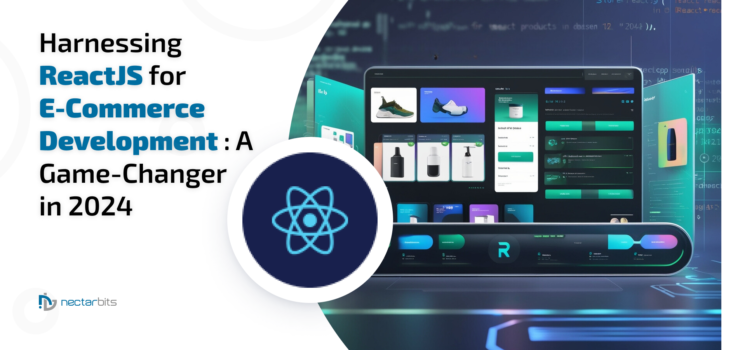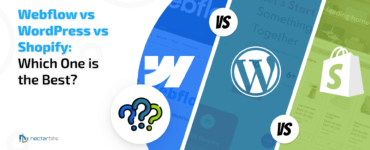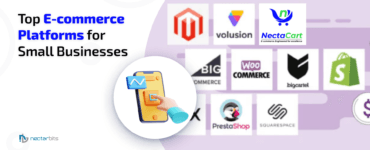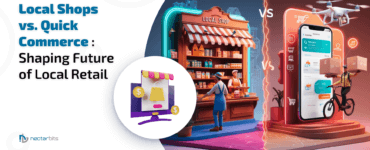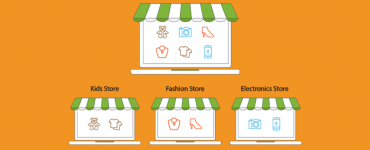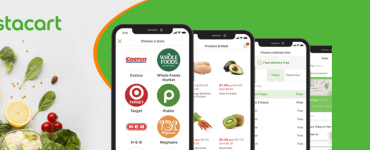In this digital age, e-commerce has truly revolutionized how an average person shops daily across the globe. The average consumer has now transitioned from physical stores to digital online platforms, with a rapidly expanding e-commerce landscape regularly freshened by new players and innovations. This has resulted in an enhanced user experience that promotes an efficient manner of buying stuff online, with added convenience and cost savings on every purchase. React JS for e-commerce development has become a game-changer as these marketplaces continue innovating their technologies.
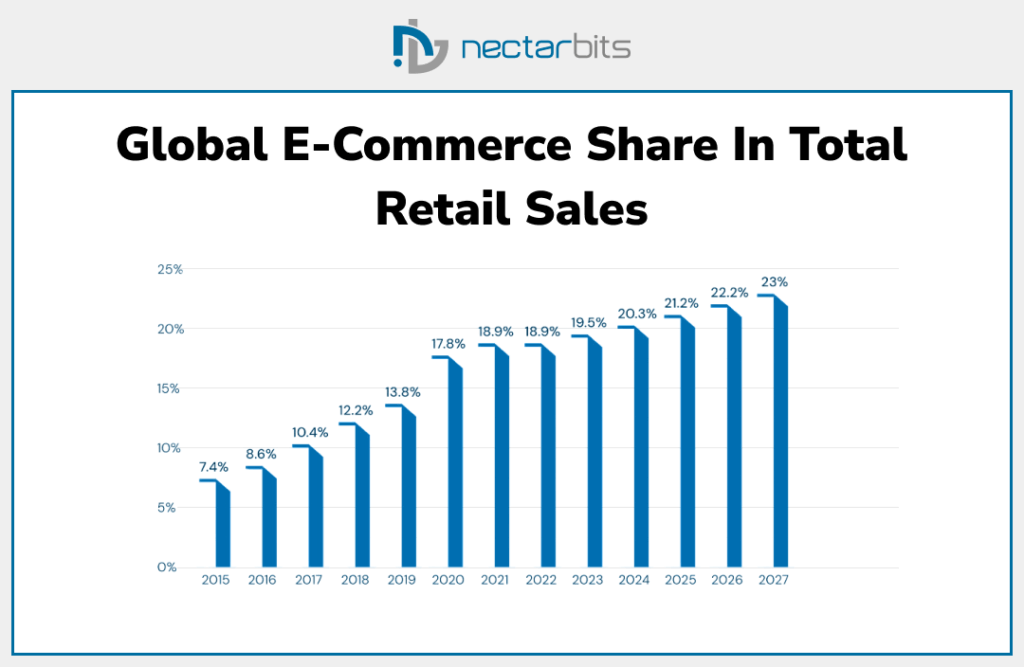
The popularity of ReactJS and the software it enables is partly due to the developmental architecture that allows building a dynamic, scalable, responsive, and modular online solution. This makes React JS software development canada a preferred choice amongst developers to become a perfect fit for e-commerce development, ensuring you get the modern UI/UX you aspire to create for your targeted users.
Features of React JS Beneficial for E-commerce Development
1. Virtual DOM
The virtual DOM is one of React’s main strengths. It enables using ReactJS for e-commerce development to update the user interface efficiently, leading to a call to render only updated elements. For e-commerce sites, such operations as adding products to the cart, changing the merchandise details, etc., can occur on the same page without refreshing the entire page.
2. Component-Based Architecture
Being a component-based architecture makes it perfect to build e-commerce websites with ReactJS. Every part of a user interface can be developed by reusing pre-existing elements in the central theme. These include product cards, categories, forms used during checkout, and more functionalities powered by available widgets. This modularity not only helps in development but also helps the engineer managing the application in the future to make amendments and additions to the app.
3. Hooks and State Management
The recent additions to React’s hooks have introduced a new approach to state management of functional components. In React JS e-commerce website designs, controlling state affairs becomes important for users’ interactions, inventory management, and order processing. Styling these states is sustainable in React via the React Hooks such as useState and useEffect within functional components.
4. Server-Side Rendering (SSR)
SSR is very effective in enhancing the performance and search engine ranking of e-business sites. Since React displays the content on the server side, it is possible to easily share the pages with search engines while using ReactJS for online shopping. This is more helpful for commerce websites since traffic from such sections of the search engine can significantly contribute to their traffic.
5. Next. js Integration
Next. Js, a React framework, is commonly used in e-commerce development due to its readiness for server-side rendering and static site generation. It extends React’s functionalities, offering dynamic routing, API routes, and auto code splitting. This makes it easier and more beneficial to build e-commerce websites with ReactJS.
Read More:-Guide to Hire a ReactJS Developer For Your Company
Advantages of Using React JS for E-Commerce Development
1. Enhanced User Experience
One of the best things about React JS is its ability to provide intuitive UI interfaces. ReactJS keeps the designs fast and fluid with functionality like the virtual DOM, optimizing it through native support elements. This is incredibly important for e-commerce app development, especially for e-commerce, where ease of use determines the sales volume.
2. SEO-Friendly
SEO is critical for e-commerce websites to secure commercial traffic sources adequately. When integrated with SSR, React JS can greatly enhance an e-commerce site’s SEO attribute. Through SSR, hired web developers maintain assurance that Search Engine Crawlers can properly index the content developed; hence, when a search is conducted, the sites developed are easily found.
3. Strong Community Support
It is important to note that React JS for e-commerce development has an active and healthy developer and contributor base that keeps improving the library. As a consequence, e-commerce site developers have a vast array of resources, technologies, and practices at their disposal, be it for solving problems or evolving strategies.
Step-by-Step Guide to Implementing React JS in E-commerce Development
Step 1:- Create a robust development environment
Before embarking on the journey to build e-commerce websites with ReactJS, one must first set up the development environment and tools necessary for such software development. This includes installing Node Package Manager, Node.js, and the Create React App.
Step 2:- Creating the Initial Structure
Begin your development by creating a rudimentary ReactJS e-commerce web design, including the preliminary services, components, and assets you may need to create the basic functionality required to build e-commerce websites for ReactJS. This includes product listings, product pages, and a dedicated shopping cart.
Step 3:- Building Components that are Reusable
Use reusable components across your application to smartly use ReactJS for e-commerce development. Modular components can help you save time by replicating them on other pages and functionalities of the site. For example, using ‘ProductCard’ and ‘ProductList’ to fetch an individual or a list of products can be used again on other pages of the same e-commerce site.
Step 4:- Managing State with Hooks
Using React for e-commerce development provides the unique benefit of using React hooks to manage the state of your application. You can use commands like ‘useState’ or the ‘useEffect’ hook to handle the precise state of the shopping cart or to fetch product data from the API within the same unified ReactJS e-commerce website design. This is another great benefit of using ReactJS for e-commerce development.
Step 5:- Integrating the app with Backend Services
It is ideal to use ReactJS for online shopping app development by integrating a host of backend services within the design to handle additional functions like order processing and inventory management. The framework even supports user authentication, with added tools like Axios to make HTTP requests and Context API for state management of the ReactJS e-commerce website design.
Step 6:- Implementing Server-Side Rendering
Server-side rendering allows better SEO and performance, simplifying the process of SSR by providing a better and more efficient manner to create pages pre-rendered on the server and ready for users to use. This provides ReactJS for e-commerce development a unique way to enhance performance and fluidity without facing compatibility issues with the native framework.
Future Trends: What You Can Expect from React JS Development
This bleeding edge framework is creating waves within the development community, with popular e-commerce apps like Walmart, Shopify and Etsy developed using ReactJS to make avail of the benefits we discussed above. Some of the future trends that will make ReactJS for e-commerce development even more exciting and help startups save software development costs include:-
- Progressive Web Apps (PWAs)
Progressive web apps combine the best web and mobile apps and have unique functionality, allowing developers to provide a more coherent experience across various electronic devices. This ensures that a business can utilize ReactJS to build a high-performance PWA that offers offline capabilities and modern designs across different sectors like finance, e-commerce, and social networking.
- Enhanced Security
Alreay equipped with industry-leading security and encryption standards, security is projected to improve drastically within ReactJS’s future development. With security and privacy of user data being paramount in e-commerce app development, this is a welcome future addition that can make your development of ReactJS for online shopping app development even more enticing and reliable.
- AI and ML intregrations
With Artificial Intelligence already swopping over every digital sector in the global market, React JS is following suit by integrating enticing AI functionalities that can transform the benefits behind ReactJS for e-commerce development. This can leverage React’s features to offer users better e-commerce trends and experiences and create innovative solutions for current e-commerce drawbacks.
Thus, investing in ReactJS development or hiring a dedicated ReactJS developer is one of the smartest business decisions any company can make to future-proof their organization.
Read More:- Essential Considerations for Hiring Your Next ReactJS Developer
Conclusion: Embracing E-commerce Innovations with React JS
Choosing ReactJS for e-commerce development means choosing the technology that provides stability, fast, reliable, and engaging user experience. It is also modular, combining elegant features such as server-side rendering and improving the sites’ speed and rank on SEO, making it perfect for developing e-commerce websites. By implementing React JS in online purchasing platforms, companies can serve customers efficiently, keep up with the competitors, and be ready for new improvements in the rapidly evolving digital world.
FAQs
It refers to using the ReactJS framework to build dynamic, responsive, and scalable e-commerce websites.
ReactJS offers enhanced user experience, SEO benefits, and a component-based architecture that makes development efficient and scalable.
SSR improves performance and SEO by pre-rendering pages on the server, making them faster and easier for search engines to index.
Future trends include progressive web apps (PWAs), enhanced security measures, and integrations with AI and ML for smarter e-commerce solutions.
With features like hooks and state management tools, ReactJS efficiently handles complex state management, making it ideal for e-commerce applications.


